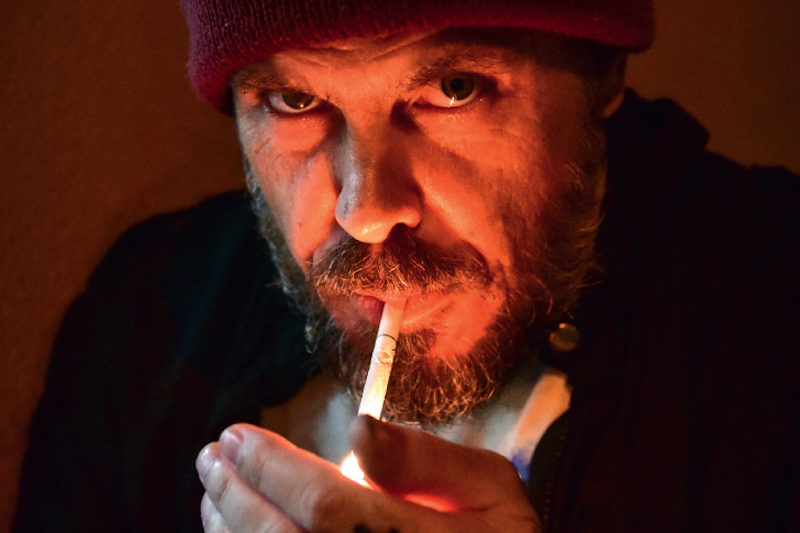David Griggs: Apocalypse New
On a three-month residency in the Philippines, David Griggs was blown away by Manila’s radical art scene. These days, he calls the city home.
Words: Ashley Crawford
Photography: Mm Yu
The fetid air of the Philippines, reeking of petrol and humidity, makes it hard for the dead to rest comfortably, as artist David Griggs clearly illustrates. Based for some time now in Manila, Griggs seems to have pulled something of a Colonel Kurtz and gone up river, following Francis Ford Coppola who famously filmed Apocalypse Now in the Philippines’ paddy fields.
The Philippines is one of the poorest zones of South East Asia. It is also one of the most rabidly religious countries when it comes to its Christian belief system, inherited from Spanish dominance in the colonial past. Manila is a city of open sewers, feral street gangs and innumerable homeless folk. It’s a city where Griggs seems to feel right at home.
It is one thing to visit a country for source material and ideas, however it is quite another to actually call that place home. Griggs’ move
revealed a keen devotion to his subject. In 2006 Asialink “airlifted” Griggs into the Philippines to undertake a three-month residency. “I did not know anything at all about the Philippines, all I knew was that Francis Ford Coppola almost lost his mind shooting Apocalypse Now there in 1976 and 77,” Griggs admits. “After a short time I discovered that Manila had such a radical, progressive art scene that it blew my mind.”
Griggs was particularly impressed with the works of the Manila painters. “I mean, it was truly like wow! Damn, these kids are good. At that time I was very bored with what was happening in Australia; it felt very conservative and stale. I felt like the weird, bad, silly painting guy. But here I could completely relate to what was going down in painting, I was excited. So I stayed.”
Griggs’ canvases have always writhed with aspects of street life – street dogs, gang members, street beggars, Halloween kids and tattooed locals. In a city such as Manila, wandering the streets, particularly with a camera on display, borders on a suicide mission. “I just wanted to try and feel the real Manila,” Griggs responds.
“I have always enjoyed the hint of danger of such things. Truth is, when I do photography or film projects I do it to just get out of the studio for a while. I never ever photograph anyone without his or her consent. There have been some crazy situations though. A Sputnik gang member pulled a gun on me one time because I had crossed an invisible line into their territory without knowing. After some sweet-talking he was cool though, and even let me photograph his tattoos.”
Griggs has often investigated death and mor-tality, at times with an air of celebratory ritual. His latest work – Horror Business – is decidedly darker, however, more gothic.
“Gothic is an interesting word these days,” says Griggs. “I could tell you that I have visited all the museums in Europe and feel in love with the Gothic style of painting mainly from 1283 or some crap. Or I could tell you I was watching too much [American-British drama series] Penny Dreadful at the time I made the Horror Business paintings.” However Griggs explains that it was a far darker driving force behind the new work. “The more horrifying truth is that I had just recovered from a severe relapse of depression. The Horror Business series imagery consists of my irrationality and a battle within myself. For these works to succeed I had to figure out if the duality of man existed. I discovered a lot about my painting practice during this series. And that the duality of man does not exist for me. I believe in infinite complexities. Really, how absurd is it to be a painter? Turning into a pure primal being every day at a certain time. It’s so insane really. I mean, the act of painting is returning to the cave. Then the outcome becomes a market business, a Horror Business.”
But Griggs denies that he has done a full Colonel Kurtz and gone upriver never to return. “I will return. I miss footpaths, cleaner air and good healthcare. When I return the first thing I will do is get a blue cattle dog.”
This article was originally published in Art Collector issue 76, APR–JUN 2016.













